As May ticks to a close there is much to be joyful about. The garden will continue this spring lushness into June with a slow fade as summer heat inevitably increases. While May is undoubtedly the garden’s peak, June must be a close second.
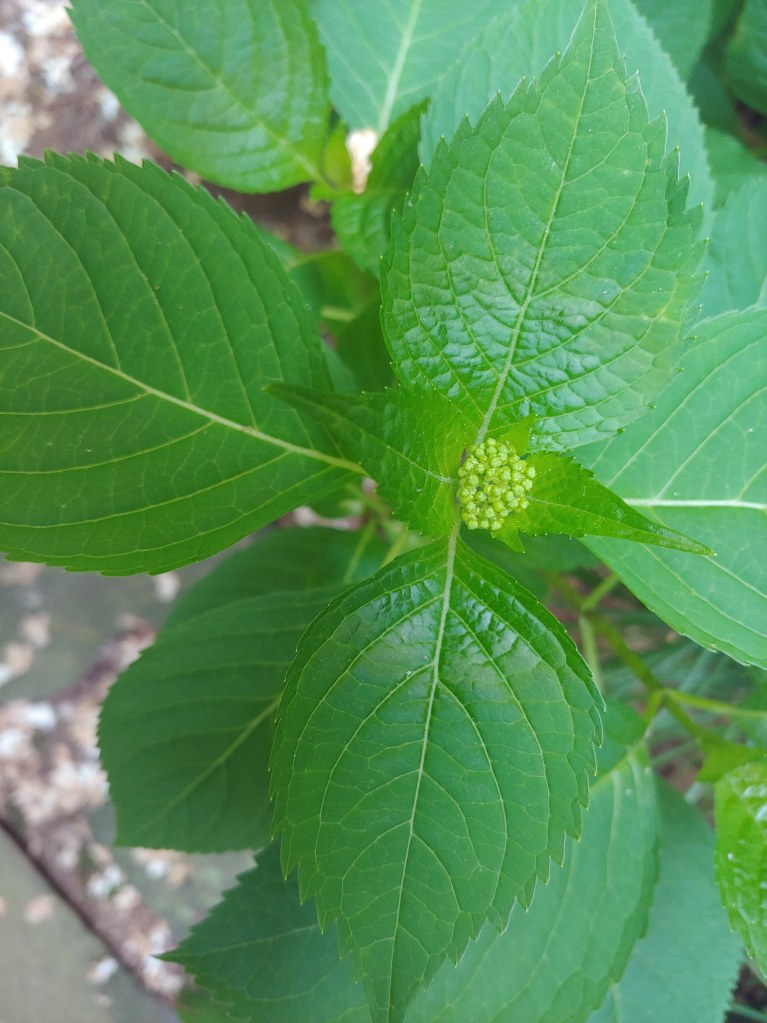
There are continued reminders that this past winter, while mild in its lowest temperatures, was nevertheless destructive. Following a year when mophead hydrangeas (Hydrangea macrophylla, above) flowered to their tips, all suffered considerable damage requiring removal of dead branch tips. While older varieties would not flower with buds removed, newer, remontant types have set buds and will soon flower. The damage is only a temporary setback, delaying flowering by a few weeks, and soon I expect all to be looking at their peak.
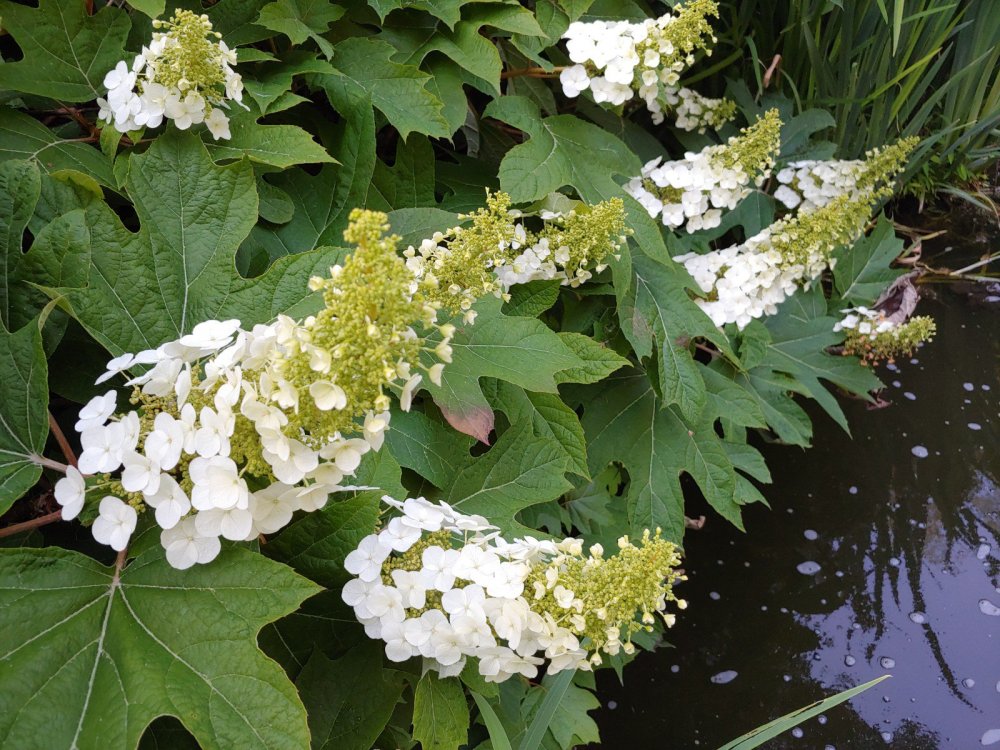
Oakleaf hydrangeas (Hydrangea quercifolia) suffered no damage, and with plenty of recent rainfall in sunnier spots leaves are huge and flowers should soon open. In the shaded parts of the garden leaves of oakleafs are smaller and flowers fewer, but after a few years they pick up in growth, if not in flowering.
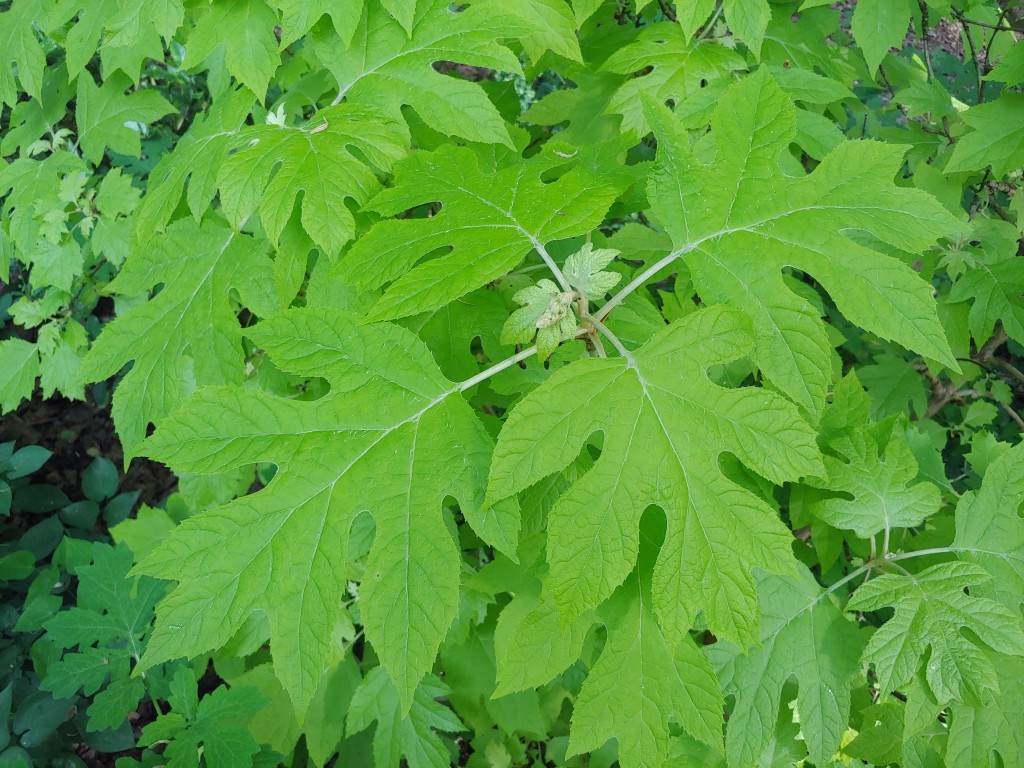
The yellow leafed ‘Little Honey’ hydrangea (above) will never be a favorite, but I am pleased to see flower buds, the first since this oakleaf hydrangea was moved into the shaded side garden. In sun the leaves faded and burned at the edges, so the move was necessary. Yellow foliage can be pleasing, with ‘Sun King’ aralia a particular favorite, but ‘Little Honey’ falls short, somehow, though my opinion might change with increased flowering.
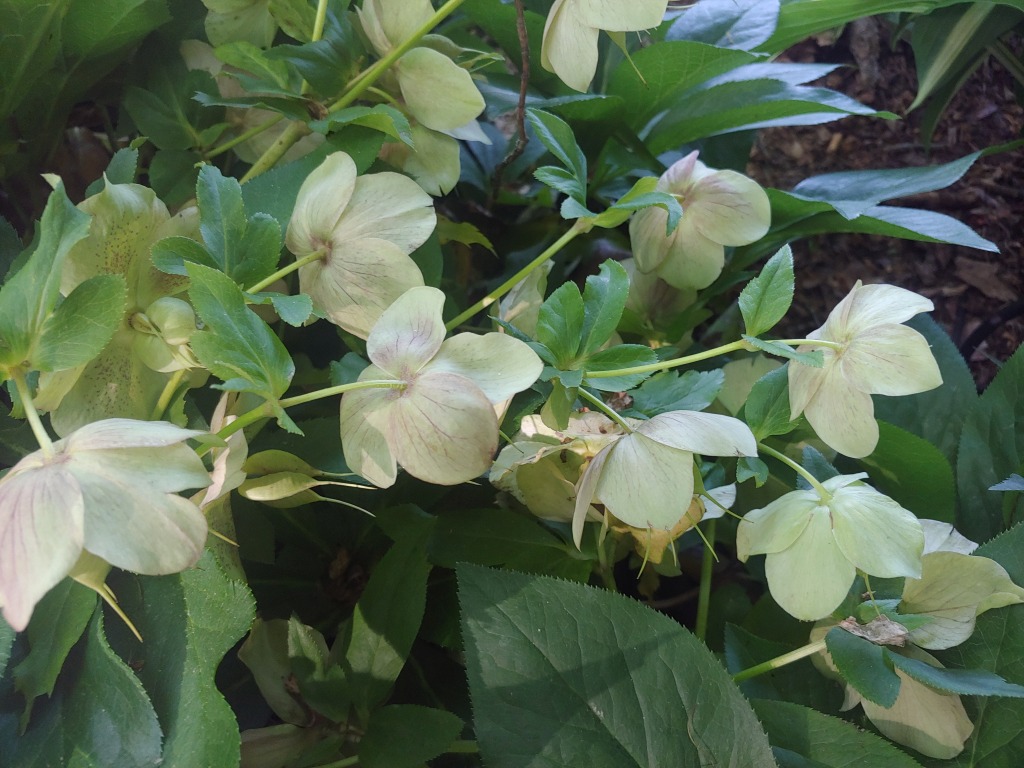
I question gardeners who claim that hellebores flower February through May. Yes, the structure of the flower remains as June approaches (above), but the color is long faded. The flowers now protect plump seed pods that hang over many dozens of seedlings from prior years. Eventually, a few might be dug and transplanted, but there is no need to save hundreds, perhaps thousands of seedlings with another thousand expected next spring.
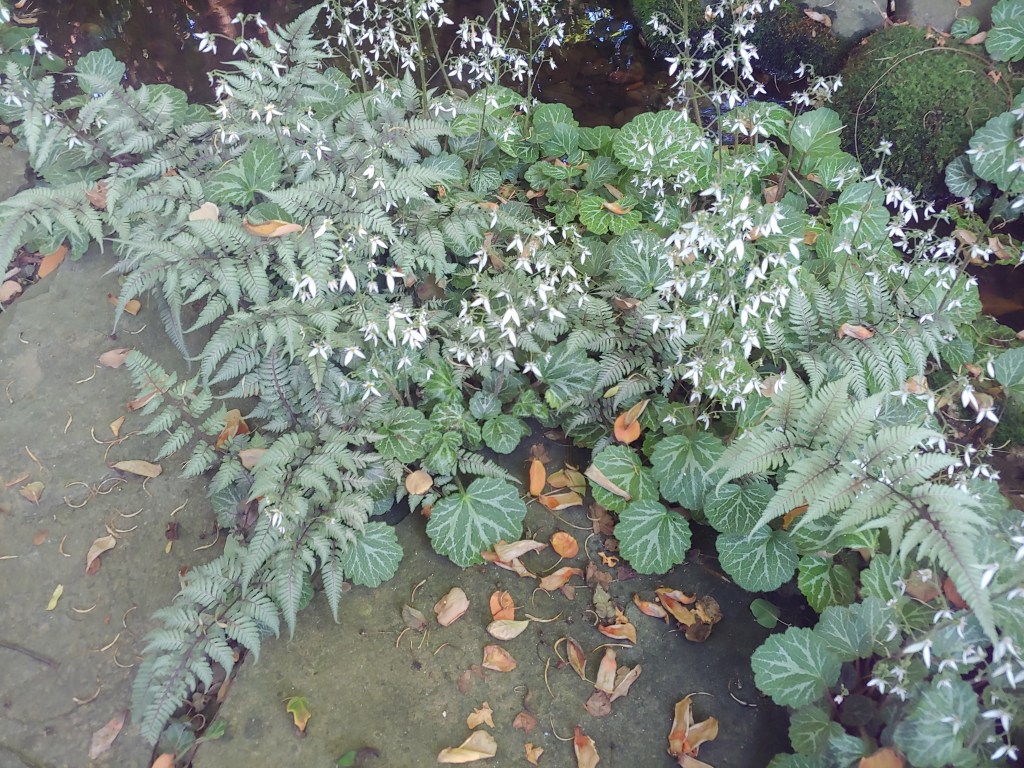
The creeping strawberry begonias (Saxifraga stolonifera, above) are at their peak flower, though it is the variegated leaves and not flowers that are their best asset, and these continue their spread through the damp shade beside the stream. Soon, I must chop these back so the water’s flow is not impeded by debris caught in the foliage. I encourage seedlings and sporelings, and this shaded area is chock full of geraniums and ferns.
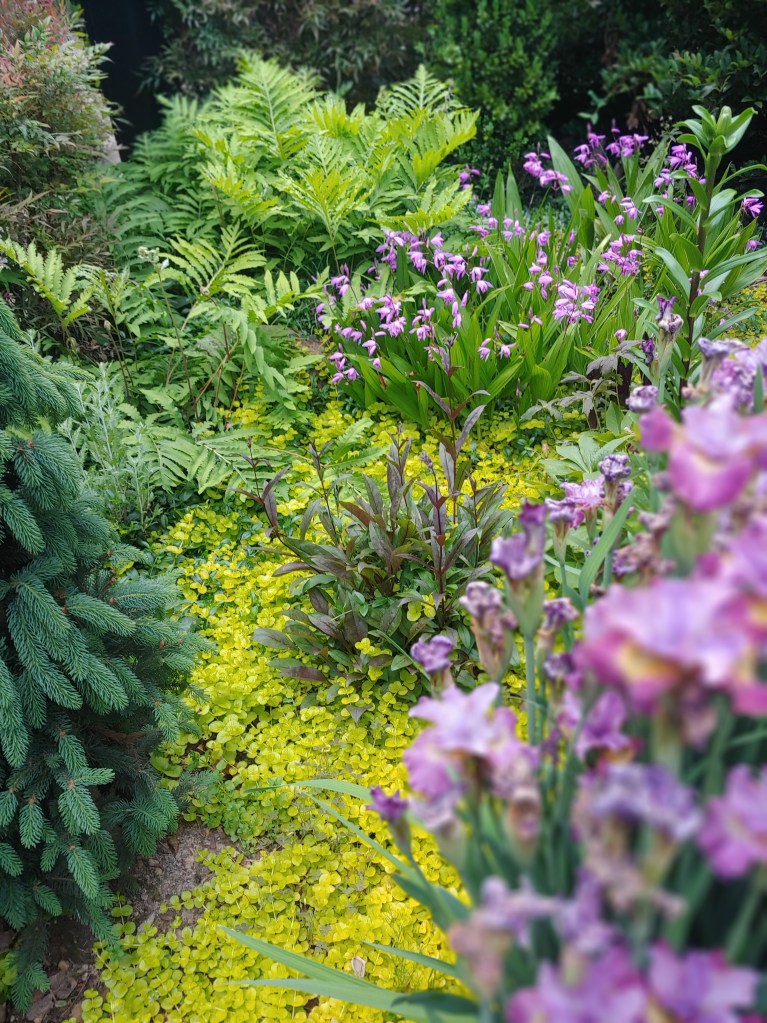
I am quite pleased with the planting just above the koi pond (above) despite the disappointing loss of the small Korean Sweetheart tree that flowered last summer, giving hope that it had finally caught on. For whatever reason, the tree was slow to go into winter dormancy, and this had a negative effect with several dead branches each year. This spring there was almost no green remaining, so out it came, with the columnar spruce ‘Cupresinna’ taking its place. Of course, the main attractions here are the irises and terrestrial orchids, and the contrast with the bright yellow creeping Jenny (Lysimachia nummelaria ‘Aurea’), but others start later for a slightly less colorful display.
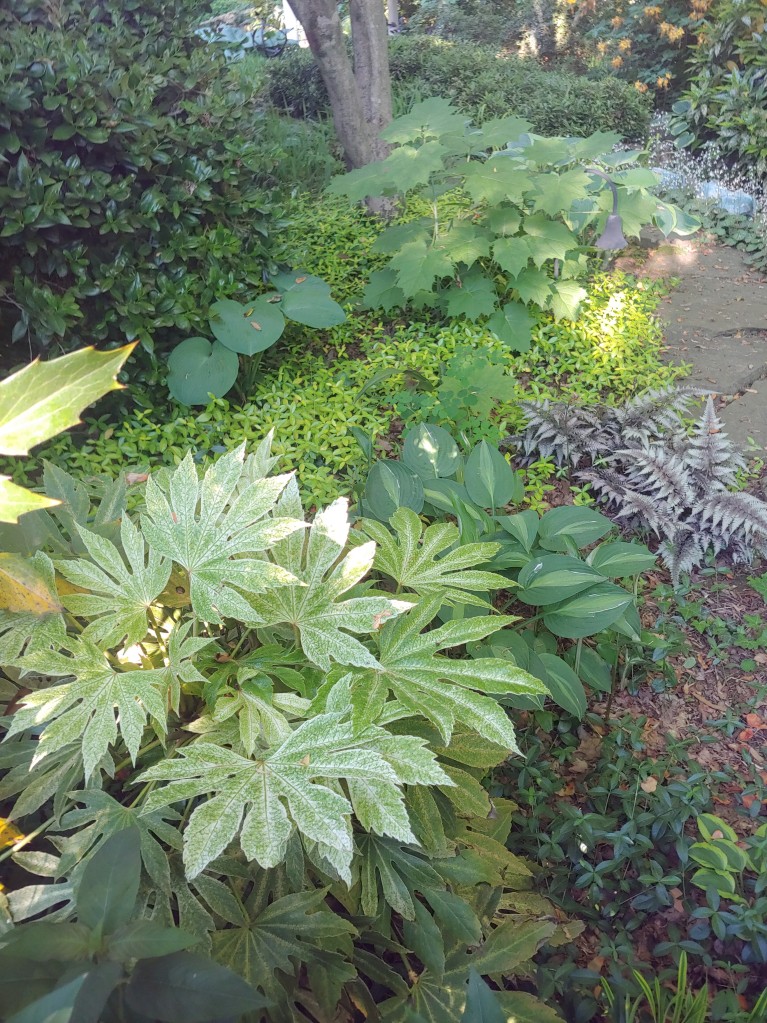
While winter was not kind to the mophead hydrangeas, the marginally cold hardy ‘Spider’s Web’ fatsia (Fatsia japonica ‘Spider’s Web’, above) made it through with no protection. There was a bit of damage on youngest leaves at the top, but that’s now covered over and it wasn’t much in any case. The first year in the ground the fatsia was covered through the winter by a leaf filled cage, but in three subsequent (but mild) winters it’s been on its own. I was too skeptical to believe the fatsia’s zone 7b hardiness rating, for something that looks like a tropical, but perhaps this is accurate. Someday, we might have a real zone 7 winter.

The yellow flag irises are fading at the edge of the koi pond, and now the favored Iris versicolor (below) and Japanese irises (Iris ensata, above) take over. With several Japanese irises the display stretches nearly to a month, nearly into July.
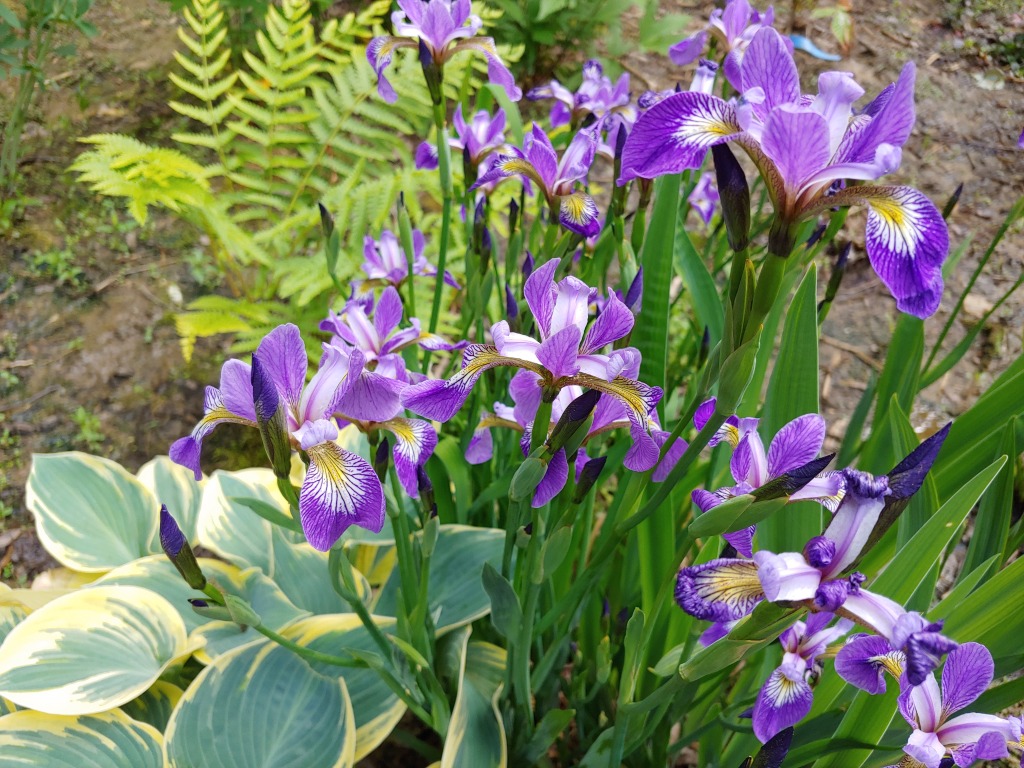
Do you suffer with Deer ?
Every day I see new deer tracks in damp ground in the garden, though when we see them it’s two or three at a time and not herds like in the closer in suburbs. Over the years I’ve learned the plants that must be sprayed and when. Aucubas are listed as somewhat deer resistant, but as evergreens they are nibbled regularly in the winter only. Years ago I lost many hostas before I started spraying, and now I’m occasionally reminded that it’s time to spray the repellent when a hostas at the garden’s edge are eaten. I used to alternate a few different brands, but now use Bobbex and in alternating months I mix in a small amount of pepper sauce that’s intended as a squirrel repellent. I’ve found that all the commercial deer repellents work, probably equally well.
Lovely look at your garden. So sorry to hear about your Korean Sweetheart tree. The two that I bought from a nursery in NJ that my brother UPSed to me are thriving and about 6.5 feet tall with white flowers. The true test for me will be whether they get those red pod-like things in late August.
I regularly kill small perennials that are neglected from the day they’re planted, but rarely lose a woody plant. Years ago I had a source to buy a Sweetheart tree ten feet tall. I kick myself thinking that passed it up. I really thought my small tree had made it when it flowered, followed by the red seedpods, and I wish I had a clue why it perished. But, it was probably going to get too big for the spot someday.
Gorgeous, as always. I love the Iris Ensata; the big bearded, not so much. Thank you for sharing all your hard work.
Peonies galore in this garden just south of you and all lying on the ground due to a major thunderstorm. Brilliant year for all my peonies.
My few peonies have just begun flowering so they have not fallen apart yet, but the sodden blooms are arched nearly to the ground.